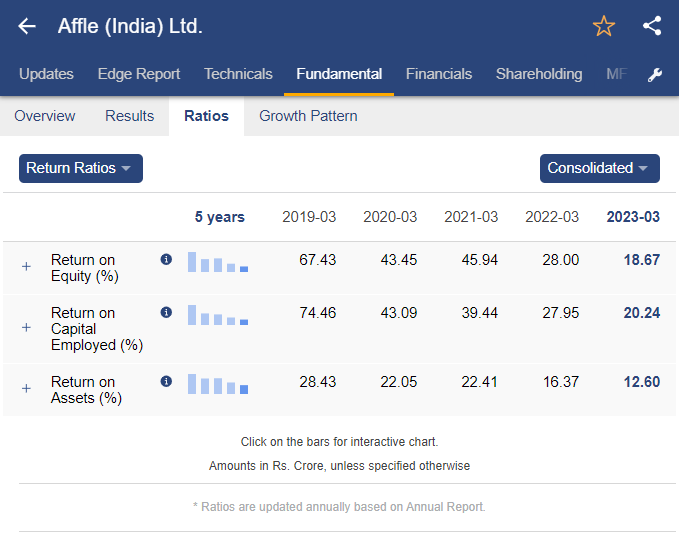Top 10 Tips To Start Small And Scale Up Gradually For Ai Trading From Penny Stock To copyright
This is particularly the case when dealing with the high-risk environment of the penny stock and copyright markets. This method will allow you to gain experiences, develop models, and effectively manage the risk. Here are 10 great ideas for gradually increasing the size of your AI-based stock trading operations:
1. Begin with an action plan and strategy that is clear.
TIP: Define your goals for trading, risk tolerance, and your target markets (e.g. copyright, penny stocks) before you begin. Begin small and manageable.
What’s the reason? A plan that is well-defined will help you stay focused and reduce the amount of emotional decision making, especially when you are starting with a small. This will help ensure that you are able to sustain your growth over the long term.
2. Try out the Paper Trading
You can begin by using paper trading to simulate trading using real-time market information without risking the actual capital.
Why: You can try out your AI trading strategies and AI models in real-time market conditions, with no financial risk. This will help you identify potential problems before scaling up.
3. Choose an Exchange or Broker that has low fees.
Use a trading platform or brokerage that charges low commissions, and which allows you to make smaller investments. This is extremely useful for people who are just beginning their journey into penny stocks or copyright assets.
Examples of penny stocks: TD Ameritrade, Webull, E*TRADE.
Examples of copyright: copyright copyright copyright
Reasons: Cutting down on commissions is crucial when you are trading smaller amounts.
4. Choose a Specific Asset Category at first
Start with a single asset class such as the penny stock or copyright, to reduce the complexity of your model and concentrate on the process of learning.
Why? By focusing on a single market or asset type, you will build your expertise quicker and gain knowledge more quickly.
5. Use small position sizes
Tips: To reduce your risk exposure, limit the amount of your positions to a small portion of your overall portfolio (e.g. 1-2 percentage per transaction).
The reason: It lowers the chance of losing money as you build the quality of your AI models.
6. As you gain confidence, increase your capital.
Tips: If you’re always seeing positive results over a few weeks or months, gradually increase your trading funds, but only when your system has shown reliable performance.
Why is that? Scaling helps you build up confidence in your trading strategies and managing risk prior to placing bigger bets.
7. At first, focus on an AI model that is simple
Start with simple machine models (e.g. a linear regression model or a decision tree) to forecast copyright or stocks prices, before moving into more advanced neural networks as well as deep-learning models.
The reason: Simpler AI models are easier to manage and optimize if you start small and begin to learn the ropes.
8. Use Conservative Risk Management
Tip : Implement strict risk control rules. This includes strict stop-loss limits, position size limitations, and moderate leverage usage.
The reason: Using conservative risk management helps prevent large losses from happening during the early stages of your trading career and helps ensure the viability of your approach as you scale.
9. Reinvesting Profits into the System
Then, you can invest the profits in upgrading the trading model or scaling operations.
Reason: By investing profits, you can compound returns and improve infrastructure to enable larger operations.
10. Regularly review your AI models and improve the models
Tip: Continuously monitor the effectiveness of your AI models and then optimize their performance with more accurate data, more up-to-date algorithms, or enhanced feature engineering.
Why? By continually improving your models, you can ensure that they evolve to keep up with the changing market conditions. This will improve your ability to predict as your capital grows.
Bonus: Once you have an excellent foundation, you should think about diversifying.
Tip: Once you have a good base and your system has proven to be effective, think about expanding to different types of assets.
The reason: Diversification is a great way to decrease risk and boost returns because it allows your system to profit from a variety of market conditions.
If you start small, later scaling up to a larger size, you give yourself time to learn and adapt. This is essential to ensure long-term success for traders in the high risk environment of penny stock and copyright markets. Take a look at the most popular top article on ai stocks to invest in for website examples including free ai trading bot, ai stock predictions, ai stocks, trade ai, ai stock market, ai stock trading app, smart stocks ai, ai stock, coincheckup, penny ai stocks and more.
.webp)
Top 10 Tips For Updating And Optimising Ai Stock Pickers, Predictions And Investment Models
To maintain accuracy, be able to adapt to market changes, improve efficiency and keep accuracy, you must constantly improve and upgrade your AI models. Markets and AI models change over time. Here are 10 tips to aid you in updating and optimizing your AI models to be effective:
1. Continuously Integrate Market Data
Tips. Make sure to regularly incorporate market data such as the most recent stock prices and earnings reports. Also, consider macroeconomic indicators.
AI models that are not up-to-date with current data will get outdated. Regular updates ensure that your model remain in tune with trends in the market, increasing forecast accuracy and responsiveness to new patterns.
2. Check the performance of models in Real Time
Tip: Set-up real-time monitoring to monitor the way your AI model is performing under market conditions in real time, looking for signs of underperformance or drift.
What is the reason? Monitoring the performance of your model allows you to identify issues for instance, drift (when accuracy declines over the course of time). This gives you an opportunity to intervene or correct the model prior to major loss.
3. Retrain models frequently with new data
Tip: Use up-to-date historical data (e.g. monthly or quarterly) to improve your AI models and allow them to adapt to the changing dynamics of markets.
The reason is that market conditions change and models based on outdated data can lose their predictive accuracy. Retraining helps market models to understand recent trends and behaviors in the market, ensuring that it is still effective.
4. The tuning of hyperparameters improves accuracy
Tip Make sure you optimize your hyperparameters frequently (e.g. the rate of learning, layers, etc.). of your AI models by using grid search, random search, or any other optimization methods.
The reason is that proper tuning of the hyperparameters helps to improve prediction and prevent overfitting or underfitting based on historical data.
5. Experiment with new Features and Variables
Tip: Continue to experiment with new features or data sources as well as other data sources (e.g. posts on social media, sentiment analysis) to enhance the accuracy of models and uncover connections or potential insights.
The reason: By incorporating new features, you will improve the precision of your model by supplying it with more data and insight. This will ultimately help to improve your stock selection decision making.
6. Utilize ensemble techniques to improve your forecasts
Tip. Make use of ensemble learning techniques, such as bagging (combining multiple AI models), boosting or stacking (combining multiple AI model) to improve prediction accuracy.
The reason is that ensemble methods are a powerful way to increase the robustness of the accuracy of your AI model by leveraging several models. This minimizes the possibility of making incorrect predictions based on the shortcomings of one or more models.
7. Implement Continuous Feedback Loops
Tip: Create feedback loops where the model’s predictions and actual market outcomes are examined and used to improve the model on a regular basis.
The reason: The feedback loop allows the model to learn from its actual performance. It can identify imperfections and weaknesses in the model that need to be fixed in addition to enhancing the model’s future predictions.
8. Include regular stress testing and Scenario Analysis
Tip: Stress-test AI models regularly by using scenarios of market conditions, such as crashes, or extreme volatility. This will allow you to test their resiliency and capability to cope with unexpected situations.
Stress tests ensure that AI models are able to adapt to unusual market conditions. It helps identify weaknesses which can cause the model to perform poorly in extremely volatile or unstable market conditions.
9. AI and Machine Learning Advancements: Stay Up-to-Date
TIP: Stay informed about the latest advancements in AI algorithms techniques, tools, and techniques and try incorporating newer techniques (e.g., transformers, reinforcement learning) into your models.
Why is that? AI is a field that is constantly changing. Making use of the latest advances can result in improved model performance, efficiency, accuracy, as well as stocks predictions and stock picks.
10. Continuously Evaluate Risk Management and Adjust as Needed
Tips: Evaluate and refine the risk management aspects of your AI model regularly (e.g. stop-loss strategies or position sizing; risk-adjusted return).
What is the reason that Risk Management is important in stock trading. The AI model must be periodically evaluated to ensure that it is not only maximizing returns, but also manages market risk.
Track Market Sentiment to Update Models.
Integrate sentiment analysis of news, social media etc. in the model’s updates to help it adapt to shifts in investor psychology as well as market sentiment. You can update your model to take into changes in the sentiment of investors and psychology.
Why? Market sentiment can influence stock price. When you incorporate sentiment analysis into your models, it’s possible to respond to changes in market mood or emotions that cannot be detected by traditional data.
The Conclusion
By updating and optimizing the AI stock picker and forecasts along with strategies for investing, you can make sure that your model is accurate and competitive, even in a constantly evolving market. AI models that are constantly updated, retrained, and refined with new data, while incorporating real-world feedback and the latest AI developments can provide you with an advantage in the stock market prediction and decision-making process. Check out the top https://www.inciteai.com/trending for site recommendations including ai stock price prediction, ai stocks, ai investing platform, ai investment platform, ai investing, best ai stock trading bot free, free ai trading bot, copyright ai trading, ai trading, ai stock price prediction and more.



